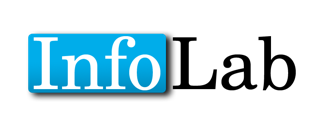Did you mean
Id:620192ca-56b1-4b95-b06e-eb9605e1dc36 institutional revitalization wallace (1)?
Id:620192ca-56b1-4b95-b16e-eb9605e1dc36 institutional revitalization wallach (1)?
Id:620192ca-56b1-4b95-b16e-eb9605e1dc36 institutional revitalizations wallace (1)?
1
results found in 25 ms
Page 1
of 1
Abstract
This research analyzes Delaware estuary oil-polluting-incidents (OPIs), their impacts, and the institutional response system socially designed to address them. The system has three interrelated objectives: to identify the nature of Delaware estuary OPIs by investigating patterns in discharge characteristics and occurrence; to identify patterns of organizational mobilization in the response system; and to identify possible chronic weaknesses within the response systems institutional structure which may limit its performance. Original data for this study was collected through personal interviews with key individuals from the public, private, and volunteer sectors and through newspaper reports from the Wilmington, Delaware, press between 1967 and 1990 that were compiled into the computer data base. Additional data was collected through archived documentation from agencies, industry, and other organizations. Small OPIs, unlike large OPIs occur daily and are adequately handled in a routine manner with the resources available through the present institutional arrangement. While large OPIs occur less frequently than small ones, they are inadequately handled with the resources available through the current institutional structure. Delaware estuary which is highly vulnerable to the large OPIs has endured 16 large oil discharges by sources both on-shore (from fixed site facilities) and off-shore (by tanker in the transportation of petroleum products) between 1967 and 1990. The magnitude of large OPIs has increased although the number of tanker trips up and down the estuary has decreased due to bigger vessel size. This research shows that the Delaware estuary response system needs to improve its performance in cleaning up large OPIs. Five major sources of weakness must be addressed: limits of the hierarchical OPI response system, institutional instability and fragmentation, limits of public and private responsibility, limits of technology and resources, and the lack of organizational learning and planning.
Author Analytic
Fishman, Brian Scott
Author Combination
Fishman, Brian Scott
Call Number
945.F5.I3
Date of Copyright
1996
Date of Publication
1996
Keywords
Hazardous Materials ;
Pollution ;
Chemical Hazards ;
Emergency Response ;
Organizations ;
Notes
Table of Contents 1) Introduction 2) Literature Review and Methodology 3) Social Context: Delaware Estuary Characteristics, Petroleum Transportation and Processing, and Oil Polluting Incidents 4) Delaware Estuary OPI Characteristics and Impacts 5) Characteristics of the OPI response System 6) The Limits of Performance of hte Delaware Estuary OPI Response System 7) Conclusions and Recommendations
Packaging Method
Paper facsimile from Microfilm
Publisher Name
University of Delaware
Title Combination
INSTITUTIONAL RESPONSE TO OIL-POLLUTING-INCIDENTS (OPIS) IN THE DELAWARE ESTUARY: 1967-1990
Title Analytic
INSTITUTIONAL RESPONSE TO OIL-POLLUTING-INCIDENTS (OPIS) IN THE DELAWARE ESTUARY: 1967-1990
Workform
Dissertation
Id
620192ca-56b1-4b95-b16e-eb9605e1dc36
1
results found.
Page 1
of 1



